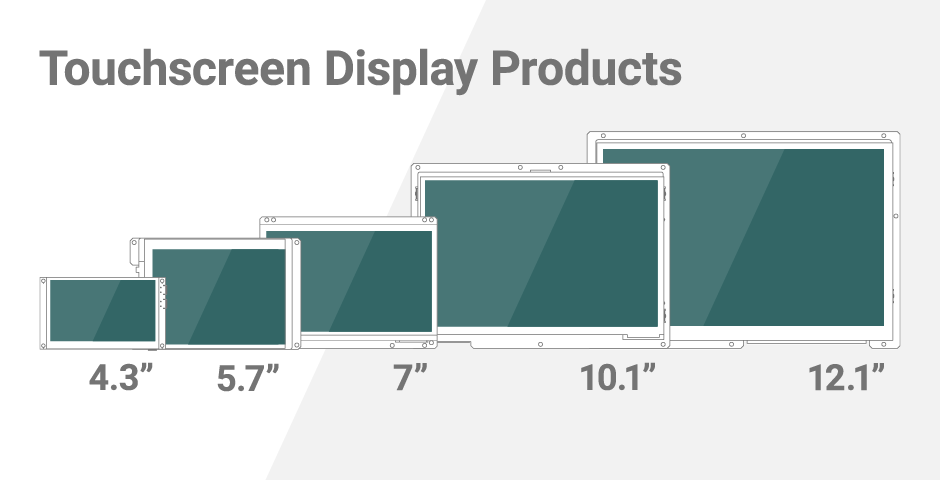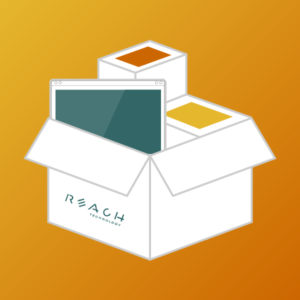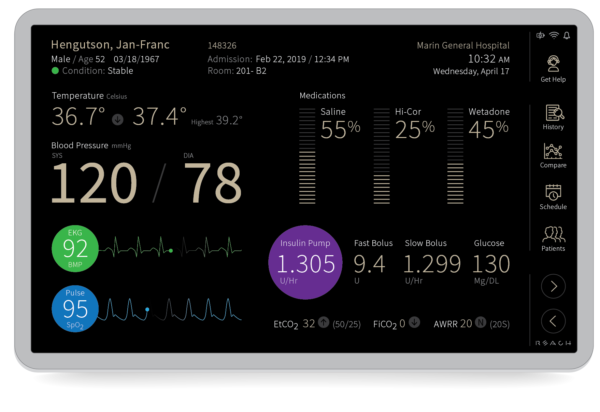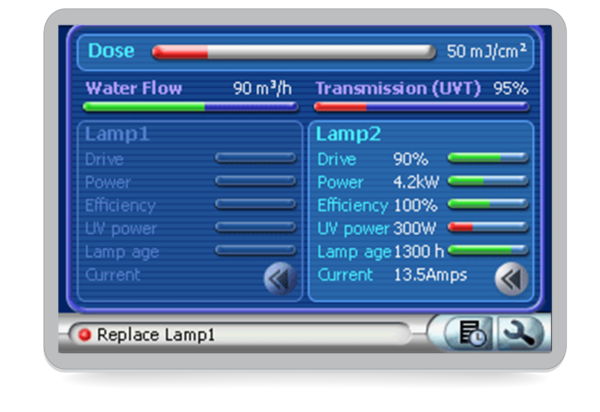Embedded LCD Controller
Engineers tell us getting an Embedded LCD Controller up and running from scratch is time-consuming and expensive. There is a steep learning curve, it takes their focus away from their core competencies, and little changes cause big problems related to maintaining the solution over time. The risk of higher development costs, missed production targets, and maintenance headaches cause them to look for something other than a home-grown solution. So they turn to Reach Technology Embedded LCD Controllers.

Compare Embedded LCD Controller Modules
Your choice of sizes (4.3″, 5.7″, 7″, 10.1″ and 12.1″), I/O, processor, memory and touch type. Compare Products
Start with a Kit
Embedded LCD Controller development kits start at $399, make it easy to get up-and-running.
Choose Between Two Development Environments
What You Get When You Work with Us
Get Started with a Touchscreen Development Kit
3,500+ kits sold to date. 100% Satisfaction Guarantee.
Adding an embedded display or touchscreen to a product can enhance its functionality and user experience. Whether you’re designing industrial equipment, or a medical device, integrating a display or touchscreen can make your product more engaging and versatile.
Benefits of Adding an Embedded Display or Touchscreen
- Enhanced User Interaction: A well-implemented display or touchscreen allows users to interact with your product in a more intuitive and user-friendly manner leading to higher user satisfaction and a competitive edge in the market.
- Information and Feedback: Displays can provide real-time information, feedback, and visual cues to users, making your product more informative and easier to use. Touchscreens, in particular, enable direct interaction and control.
- Space and Aesthetics: Embedded displays and touchscreens eliminate the need for physical buttons or controls, saving space and giving your product a sleek, modern look. This is particularly important in devices with limited real estate.
- Flexibility and Customization: You can design the user interface (UI) to match the specific needs of your product. Customization allows you to create a unique, branded experience for your users.
- Adaptability: Embedded displays and touchscreens can adapt to different use cases and scenarios, providing versatility and flexibility to your product. You can update the software to add new features or adapt to changing user needs.
Steps to Add an Embedded Display or Touchscreen
- Identify Requirements: Determine the type and size of the display or touchscreen that best suits your product and its intended application. Consider factors like screen and touch technology (resistive/capacitive).
- Select Hardware: Choose the appropriate display or touchscreen module that meets your requirements. Ensure compatibility with your product’s power, communication, and physical constraints.
- Design the User Interface: Plan the graphical user interface (GUI) design for your product. Decide on layout, navigation, icons, and interactive elements to create an appealing and user-friendly interface.
- Connect Hardware: Integrate the display or touchscreen module into your product’s hardware. This includes electrical connections, mounting, and housing to ensure a secure fit.
- Develop Software: Create or configure the software that drives the display or touchscreen. This involves programming the logic for rendering content and handling user interactions.
- User Interaction Testing: Thoroughly test the display or touchscreen to ensure that it responds accurately to user inputs and displays information correctly. Pay attention to responsiveness, accuracy, and any calibration requirements.
- Integration Testing: Test the entire product with the embedded display or touchscreen to ensure seamless integration and functionality.
- Optimization: Fine-tune the user interface and software to optimize performance, responsiveness, and power efficiency. Consider factors like screen brightness, touch sensitivity, and responsiveness to gestures.
- Compliance and Certification: Ensure your product complies with relevant industry standards and certifications, especially if it’s a safety-critical or regulated application.
Or, you can skip all these steps and start with one of our many embedded touchscreen development kits.
Embedded Touchscreens Made Easy:
Up in Days, Smoothly to Production. Get started with a Development Kit.
Reach Technology is now a part of Novanta.
Sales and Engineering
545 First Street
Lake Oswego, OR 97034
503-675-6464
sales@reachtech.com
techsupport@reachtech.com
Manufacturing
4600 Campus Place
Mukilteo, WA 98275
service@reachtech.com
Please send payments to:
Novanta Corporation
PO Box 15905
Chicago, IL 60693
accounts.receivable
@novanta.com



